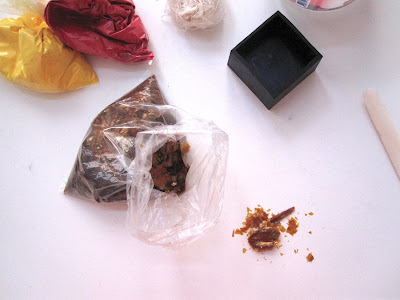Our entrance is on a particularly steep bit of the street:
Directly across the street the slope is a bit more evident:
On the ground floor is the workshop and Anika's practice space:
I'm standing on the mezzanine level where we take off our shoes:
The big blue bottle is a 19 ltr bottle of spring water we use for drinking and making tea. Tap water is fine for cooking. I have my very own bottle in my room. Love the over-scaled hand-pump on top. Next floor up is the organizers', Julie & Anika's, office area:
On this level the stairs move from the uphill side of the building to the centre. Next floor up is my room, where I sleep and exercise...
and work. Nice and bright when the sun is shining but will get quite warm soon, I've been told:
The shared shower-room is perfectly functional and rather nice:Next floor up is the great kitchen:
I'm standing on the stairs leading up to the terrace (seen below) below, where Laleh, the other resident artist, is doing laundry:
On this fine day (22 deg) the Golden Horn swarms with boats
and tourists on the ancient city side:
Tourists apparently bring crime, especially to this area where no tourists came until some hostels opened up within the past two years near the Galata Tower, the Genoese-built fortification dating back to 1348, with various restorations since. Now the open area at the base of the tower, a sort of piazza, has become a hang-out for drunks.
But I'm feeling a bit less uneasy with all the roast chestnut street vendors now I've been told they are actually undercover police, again, mostly for the tourists.
Happy Easter!















































